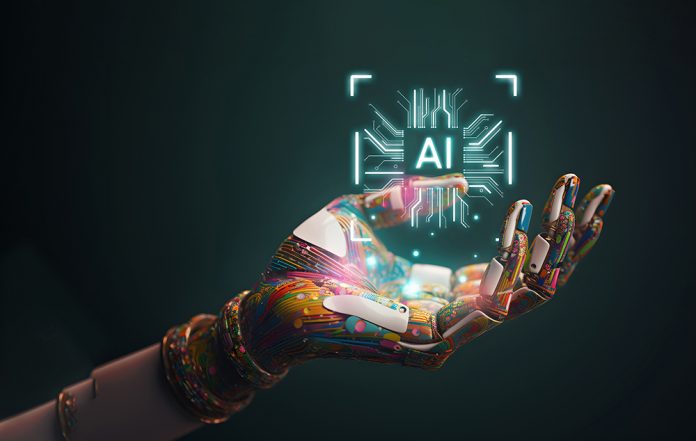Advertising expert Rich Stoney investigates whether the world of ads and marketing still needs that human touch.
From the very moment Unilever’s founder Lord Leverhulme supposedly spluttered that while he knew half his advertising budget was wasted, he didn’t know which half, ad agencies and marketers the world over have been trying to find ways of guaranteeing results.
Now, the tech industry has joined the fight. ChatGPT and its even newer generative AI peers from the big shots like Meta, Musk and Microsoft promise much: unlimited creativity at the touch of a button and instant imitative satisfaction from a machine that’s learnt from the whole of the internet.
These kinds of prospects have seen the investors piling in and the tech stocks surging. But they’ve also caused the Hollywood screen writers’ and actors’ unions to strike, looking for some kind of protection for their livelihoods.
So, what about my world – advertising – sitting at the confluence of commerce and creativity? Is generative AI, with its inherent proposition of practically free, almost effortless, totally instant creative output exactly what everyone with an advertising budget has always craved?
Or is the notoriously faddish advertising and marketing industry promising secret sauce when it’s actually selling snake oil? Is data-scraping from the internet a good idea? Or is it scraping the barrel? And, by the way, is it time for me, a copywriter by trade, to hang up my laptop and accept digital defeat?
As a way of finding out, I thought I’d run a test. First, I chose a familiar brand, something that had some advertising pedigree so we’d have a benchmark. Then I typed in the words, ‘Create a print advert for Stella Artois’.
Seconds later, my new mate Chat responded with this: Headline: ‘Elevate Your Moments with Stella Artois’. It suggested a background image of: ‘A beautiful sunset view overlooking a picturesque European cityscape, with a group of friends gathered around a table, clinking glasses of Stella Artois’.
It also gave me ‘be legacy’ as a strap line.
Look, I’ll be honest; I’ve seen worse.
But I’ve also seen the above:: one of them is a copper-bottomed classic; the other is a cliché. And there are no prizes for guessing which is which. What sets them apart is humanity.
When I’m having ‘a moment’ (that terminology isn’t as positive as old Chatty thinks), I’m not sure I want it elevating by way of strong lager. I’m also less than confident that my moment would occur clinking glasses with friends while the sun sets over a generic European city… Worst of all, I’m not sure what ‘being legacy’ would mean or how I’d do it.
Being legless maybe but being legacy not so much. Conversely, I smile knowingly, fully aware of exactly when and why whispering ‘My shout’ might occur. Especially paired with that ultimate in counter-intuitive straplines: ‘Reassuringly expensive’. So, humans 1, machines 0, then? Not quite.
I didn’t give the Chatser much to go on, did I? So, let’s brief a little more fully. Let’s try: Create a funny print advert for Stella Artois using its expense for the joke. Now, as someone who likes to think of themselves as a creative thinker and writer, I don’t much like being led by the nose quite so harshly. However, I’d never come back with ChatGPT’s response. ‘The Price of Class: A Stella-fied Adventure!’ screams the vacuous headline (er, what happened to ‘funny’?). The visual is described as ‘An extravagant, lavish, and somewhat absurd scene that humorously exaggerates the opulence of enjoying Stella Artois’.
And finally, there’s the new strapline that Chat itself describes with a self-regarding flourish as ‘humorous’: ‘A Sip of the Unimaginable!’ This is grim stuff. (I mean the advertising, not the drink).
Having been given the benefit of the doubt, the machine immediately scored an own goal by making its work worse… Humans 2, machines 0.
You could accuse me of tilting the pitch somewhat in my own favour. I’ve set the bar very high (pun absolutely intended) by choosing a great ad as my point of reference, rather than the quite poor average ad that we tend to see more of today. It’s a fair point.
Though if this article was about AI designing cars, you’d want to know if it could match the achievements of, say, Porsche or Rolls Royce. Not whether it had equalled an Austin Allegro.
So, AI isn’t the way forward. Not yet at least. You could use it and – if you’re prepared to accept derivative, meaningless nonsense in your advertising – perhaps you’d be happy. But I know you’re not that easily pleased.
I know that you’re more likely to want something a little more substantial, a bit more original (and thus own-able) to give your marketing an edge. My guess is that you’d rather invest your time and your budget in something that inspires, that makes you say, “I never thought of it like that” – something that makes you feel confident that your advertising’s saying something relevant and resonant to your customers.
For that, it appears, you’re still going to need a human. And perhaps, that human might be me.
Rich Stoney is an independent thinker, copywriter and art director who’s created advertising for all sorts of clients in every medium over the last three decades. He’s also 100% human.




